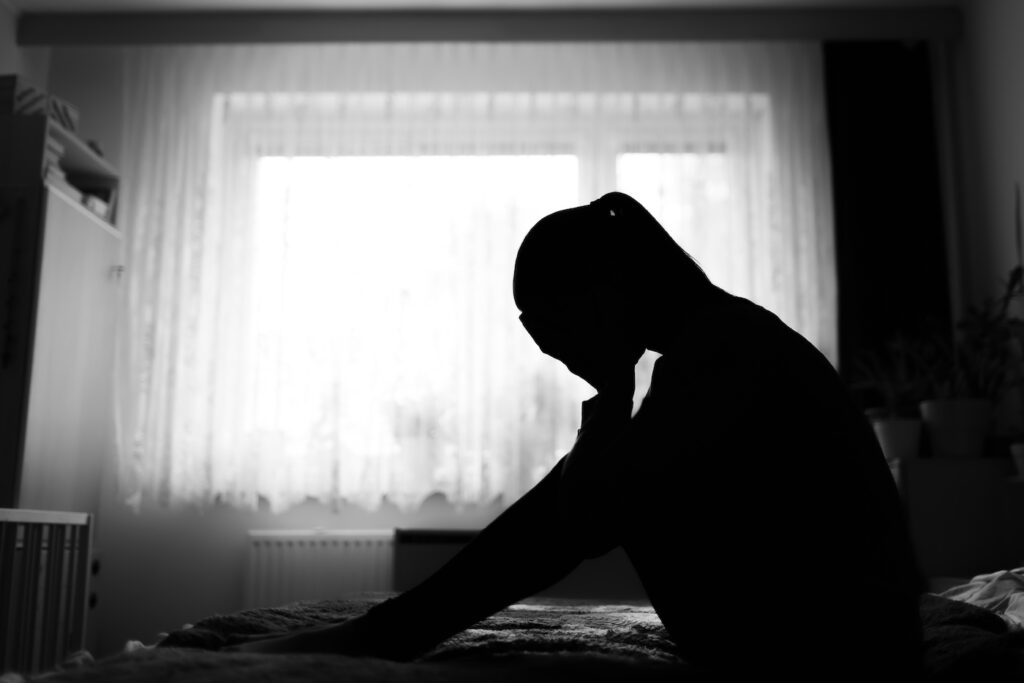The popularity of LGBTQ identities in the United States is at an undeniable high. The 7.2 percent of American adults who claim such a self-identity is “double what it was when Gallup first measured LGBT identification a decade ago.” Nearly 20 percent of Gen Z, born between 1997 and 2012, claims part of the rainbow—an estimate almost twice that of Millennials (11 percent) and six times that found among Gen X (3.3 percent). Civil same-sex marriage, the law for nearly eight years now, has the support of 71 percent of American adults—almost certainly more among adolescents—and is up 13 percentage points since the Obergefell decision. All of the major American medical, sociological, and psychological professional organizations endorse LGBTQ claims, including gender medicine for minors, an industry now buttressed by over 400 clinics.
Despite this impressive march through the institutions, the dominant narrative remains that all gains are “fragile.” This narrative has succeeded in inculcating fear, leading scholars and health practitioners to multiply their calls for antidiscrimination laws, which they consider “essential tools for achieving LGBTQ+ health equity.”
In this atmosphere we await an impending Supreme Court decision in 303 Creative LLC v. Elenis, the case in which wedding website designer Lorie Smith is challenging the state of Colorado’s anti-discrimination laws by appealing to the free speech clause of the First Amendment. Apparently, granting her the right to think and act as a Christian in her small business is one among many “nuanced and more complex manifestations of stigma” that, if legally allowed, would “further worsen the health of LGBTQ+ populations and widen existing health disparities.” Or so argues a recent scholarly opinion in the Journal of the American Medical Association.
This is what I call “stigmarketing,” that is, appealing to claims of stigma to motivate social change—and it has become the backbone of legal efforts toward that end. I don’t wish to endorse or reinforce stigma, but when so many studies now measure stigma as a lack of support for same-sex marriage, it’s obvious that we’ve proved Chief Justice Roberts’s skepticism in his Obergefell dissent about how the majority “graciously suggests that religious believers may continue to ‘advocate’ and ‘teach’ their views of marriage.” The JAMA authors claim that “what social science knows about stigma in general is clear,” namely, that “it takes proactive and concerted effort and activism across levels to counter and mitigate it, and actions that are not actively antistigmatizing can perpetuate the stigmatizing status quo.” In other words, there can be no tolerance of the sort that Lorie Smith is seeking. Legal efforts to force cultural change are required to reach “equity.” This logic keeps reappearing, reminding me of the famed psychologist Abraham Maslow’s remark, “it is tempting, if the only tool you have is a hammer, to treat everything as if it were a nail.” It’s nothing to be proud of, though; this “law of the instrument” is considered a source of cognitive bias.
Start your day with Public Discourse
Sign up and get our daily essays sent straight to your inbox.Minority Stress Theory is regularly employed as a post hoc explanation for the differences that typically remain after accounting for all the ways in which scholars expect heterosexual and LGBTQ behaviors, situations, and outcomes to be comparable (but often aren’t).
Stigmarketing capitalizes on gay–straight disparities, in contrast to the pre-Obergefell quest to document “no differences” (especially between the children of gay and straight parents). This new focus on demonstrable disparities can be measured by the absolute surge in research on “minority stress theory,” or MST. When applied to sexual orientation and gender identity, MST argues that stigma indirectly contributes to poorer health by creating stress, the downstream accumulation of which can result in worse outcomes among sexual minorities (including more nascent ones). Since 2019, the number of academic publications about LGBTQ experiences of minority stress has exploded, growing at annual rates of 36 percent (in 2020), 35 percent (in 2021), and 28 percent (in 2022), including 2,690 scholarly publications last year alone. A decade ago MST was mentioned in just 155 publications on LGBTQ health. Stigma is good marketing, even when it’s waning, because bad news is far more effective at motivating and achieving legal change than good news.
Minority stress is not simple to measure. Instead, MST is regularly employed as a post hoc explanation for the differences that typically remain after accounting for all the ways in which scholars expect heterosexual and LGBTQ behaviors, situations, and outcomes to be comparable (but often aren’t). The gaps are labeled disparities and attributed to the downstream results of minority stress. That is, if it weren’t for the deleterious effects of stigma, the psychological and physical health outcomes of sexual and gender minorities would be no different from those of the rest of the population. But what if the health disparities won’t disappear? Indeed, long after the Dutch advanced inclusive policies for sexual minorities and exhibited wide social tolerance of the same, same-sex-attracted adolescents there still display obvious higher substance-use rates and lower life satisfaction than their heterosexual peers.
It’s not just the Netherlands. In a study of suicidality—arguably the pinnacle downstream fear of stigma and discrimination—Ilan Meyer, the guru of MST studies, and his coauthors observed higher suicide behavior among the youngest cohort of gay, lesbian, and bisexual adults in the United States. This is the group that has experienced the least overt stigma and the greatest levels of social acceptance, and that witnessed (as youth) what many hold to be the signal cultural achievement—nationwide same-sex civil marriage. And yet all of this has not yielded demonstrably greater mental health; indeed, things are worse among the young, even though they have experienced a fraction of the prejudice their elders did.
Some scholars have supplemented MST by proposing a “rejection sensitivity model” that in part considers how perception may differ from reality. If you’re sensitive to rejection, you’re apt to perceive more stigmatizing and antagonistic behavior than is actually being exhibited. This could help explain how the youngest LGB adults could report statistically identical levels of verbal insults or abuse that occurred since age 18, despite older cohorts’ far longer exposure. The former also report higher rates of “everyday discrimination” and “internalized homophobia,” and much higher levels of psychological distress than older LGB adults, even while claiming greater “connection with the LGBT community.” Not all stigma comes courtesy of outsiders, though, as is made clear by published research on stress risks “from within” the gay community, such as the experience of “intraminority body stigma.” Perhaps health equity is genuinely improbable, rooted less in stigma than in different experiences, expectations, and behaviors.
Meyer’s study’s results reflect the elevated anticipation of—but lower average ceiling in—physical, mental, and relational health that have accompanied leaps forward in legal and cultural endorsements of LGBTQ identities and relationship behaviors. When what you expect doesn’t materialize, it’s depressing. If in fact “it gets better,” as many gay adolescents were promised beginning in 2010, it does so not because problems disappear but because resilience is learned.
I know a bit about resilience. Because of my research and writing on controversial topics, not a day goes by at my workplace that I do not anticipate having to navigate negative sentiments about me, but on any given day I’m unlikely to detect it. Handling this has become second nature. While it’s not optimal—and some wonder why I don’t leave for friendlier confines—I can deal with it. I don’t dwell on it, and I remind myself that everyone feels like an outsider in some ways and in some places. Meyer, too, understands the importance of resilience. Indeed, he’s written about it:
Resilience research has shown in various populations that, starting early in childhood, individuals mount significant, sometimes heroic, coping efforts in the face of stress and adversity. But research on resilience and, more generally, salutogenic, or health-inducing processes in LGBT populations has lagged.
Nevertheless, hammer in hand, Meyer and his coauthors double down, concluding that their recent unexpected findings “speak to the endurance of cultural ideologies such as homophobia and heterosexism and accompanying rejection of and violence toward sexual minorities.”
Minority stress theory tends to lack a clear sense of agency on the part of persons. It esteems collective action while implying personal passivity and an externalized locus of control.
Research on resilience among LGBTQ populations has lagged because it’s bad for (policy-pushing) business. Instead, what appears assumed is a crippling inability of young adults to respond to perceived conditions and make decisions about their own lives. The oldest cohort in the study, ages 52–59, would not recognize this lack of agency. Many of the latter built alternative institutions rather than pursue the more laborious and implausible work of “unraveling heteronormativity.” In other words, minority stress theory tends to lack a clear sense of agency on the part of persons. It esteems collective action while implying personal passivity and an externalized locus of control.
What does the surge in stigma research mean for the 303 Creative case awaiting the Supreme Court’s decision in June? It’s a mixed bag. A conservative court is less apt to be attuned to a univocal social science, not because the justices disregard empirical evidence but because they’re more interested in legal principles and precedents. But the glut of research combined with progressive assumptions that LGBTQ inequities always merit repair suggests there will be no shortage of cases making their way through the courts.
One of the more recent cases, Hunter v. U.S. Dept of Education, may prove enlightening. Filed in the U.S. District Court in Eugene, Oregon, a series of plaintiffs—LGBTQ students at evangelical colleges—asked for their schools’ Title IX exemptions to be revoked. If they had won, federal student loans and grants to Christian college students would be in jeopardy unless the institutions altered campus relationship codes. The damage to universities’ ability to operate would be catastrophic. Meyer and I both appeared as expert witnesses—on opposite sides. The plaintiffs appealed to “stigmatic injury.” The judge didn’t buy it. They lost (but plan to appeal).
The end game in the 303 Creative case is clear. Christians will either retain the freedom to express their understanding of sex as dimorphic and marriage as a union between a man and a woman—ideas and practices that widely redound to global benefit—or their vision of sexuality and marriage will be suppressed, giving way to government-favored alternatives. Any Obergefell-era pretense that same-sex marriage, now joined by gender ideologies, would peacefully coexist with Christianity was clearly a convenient fiction. But human reality is heteronormative. We wouldn’t be here if it wasn’t. Social constructions, on the other hand, remain tentative, requiring consistent endorsement and reinforcement, with “fighting stigma” as perpetual motivation. The “Respect for Marriage Act,” signed into law in December, is the latest evidence of this. It won’t be the last.













